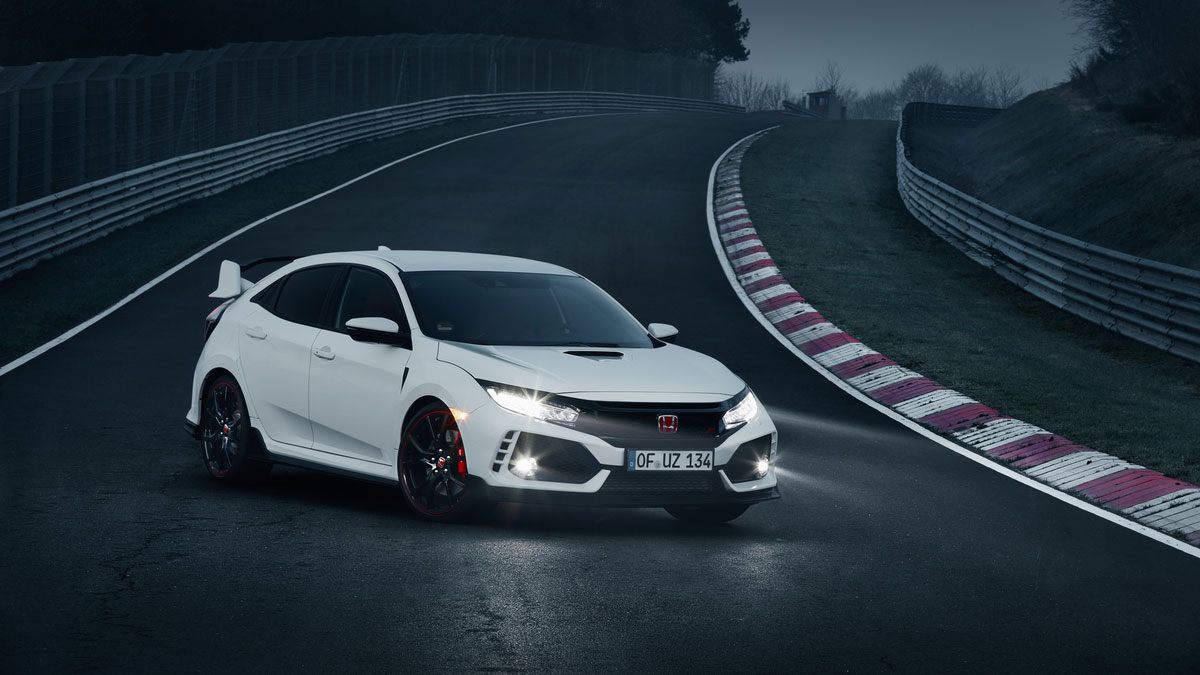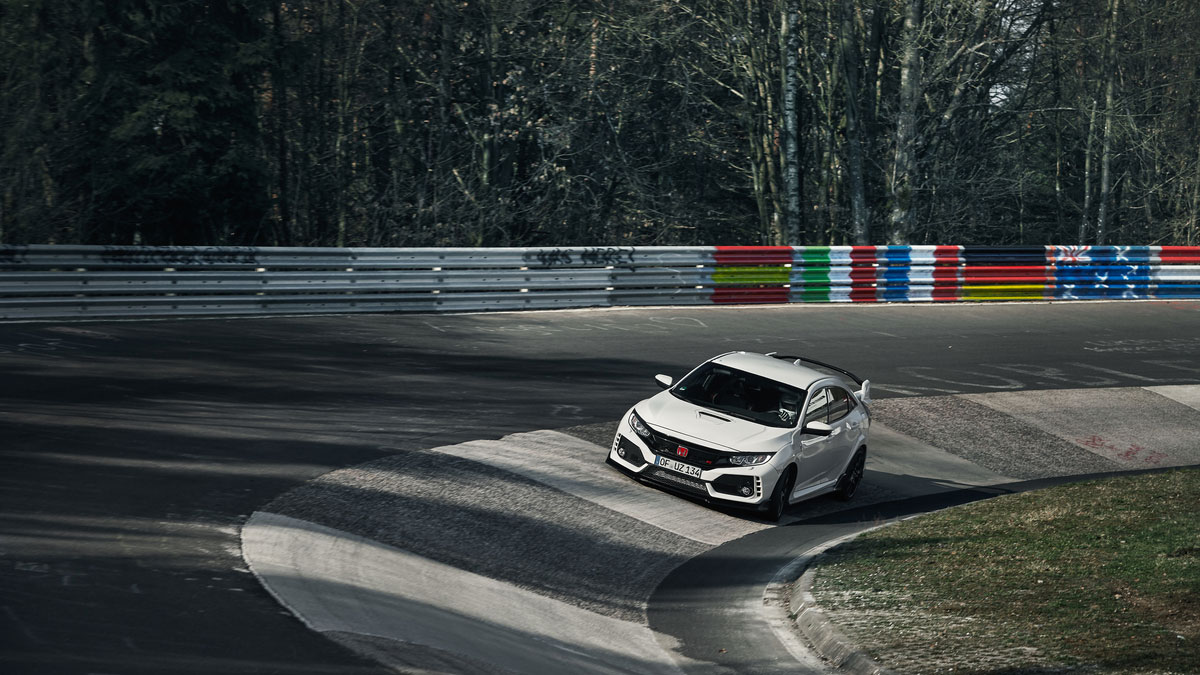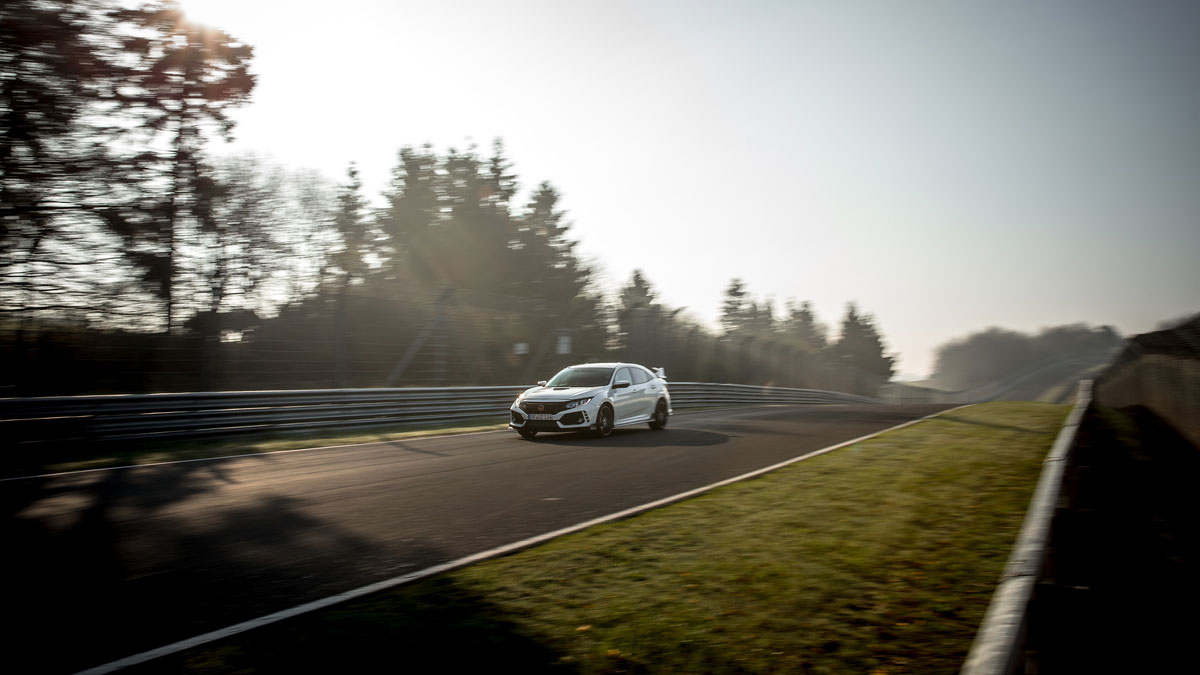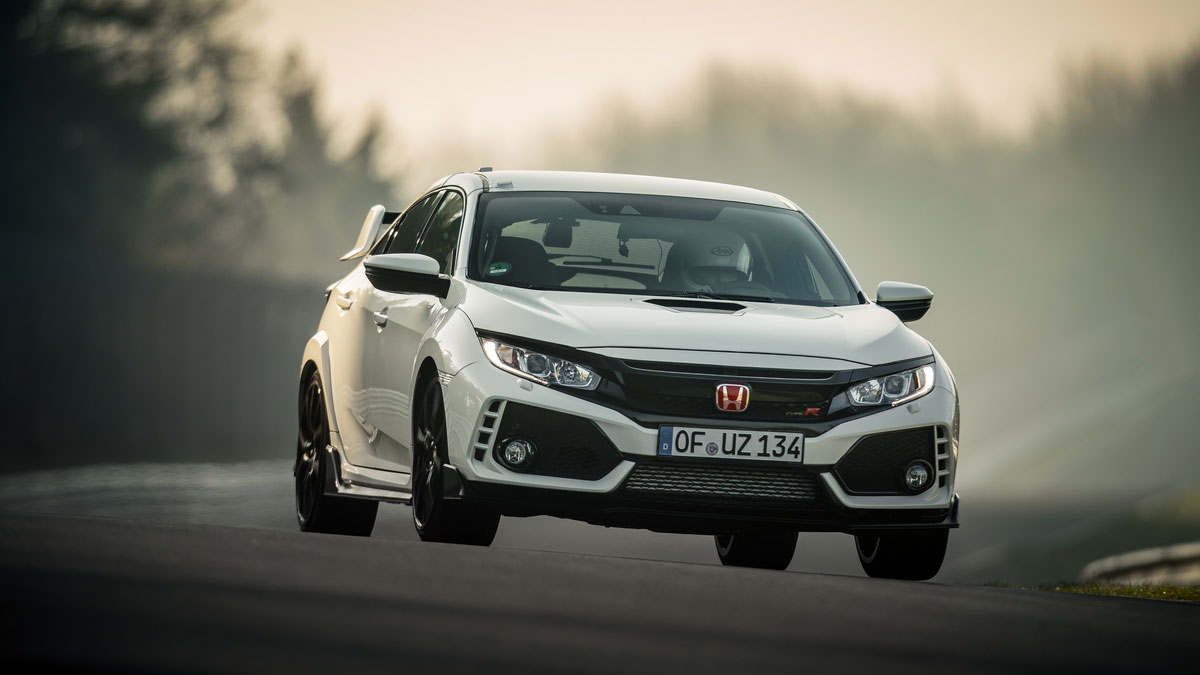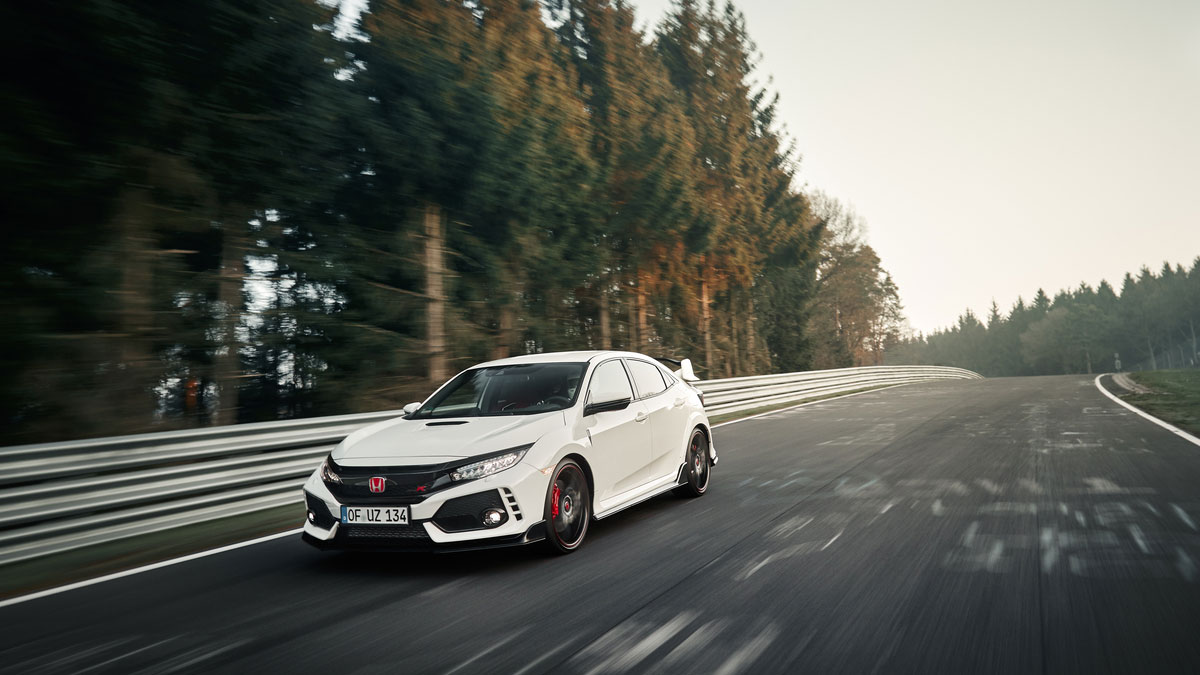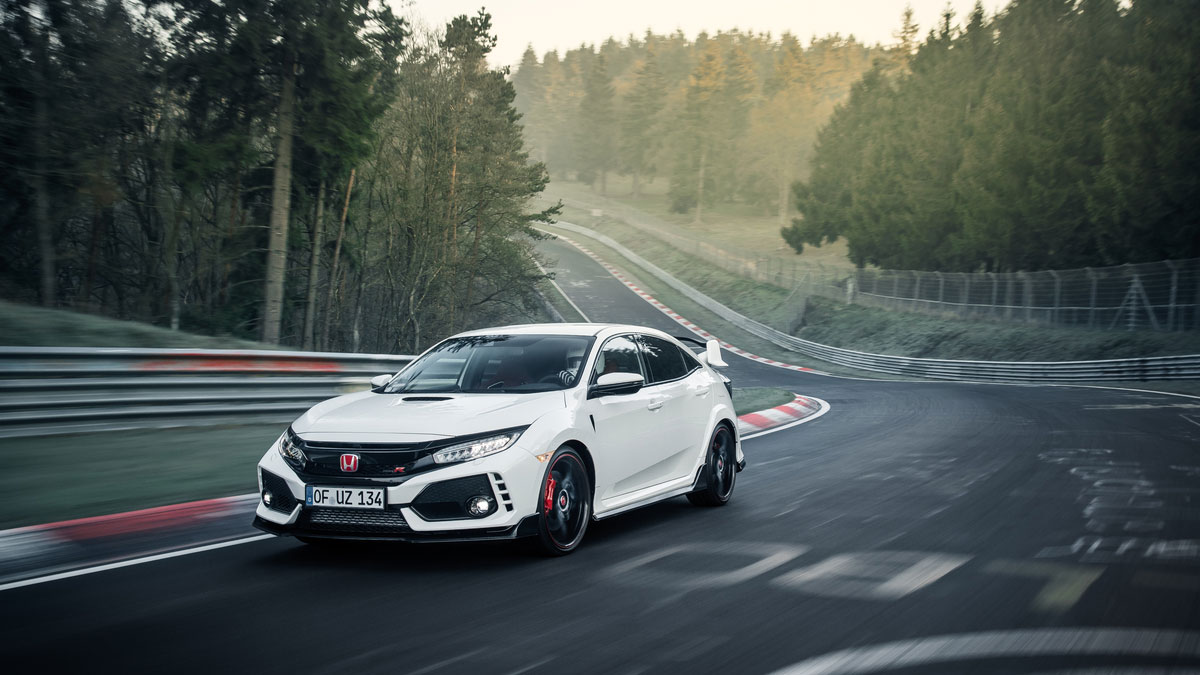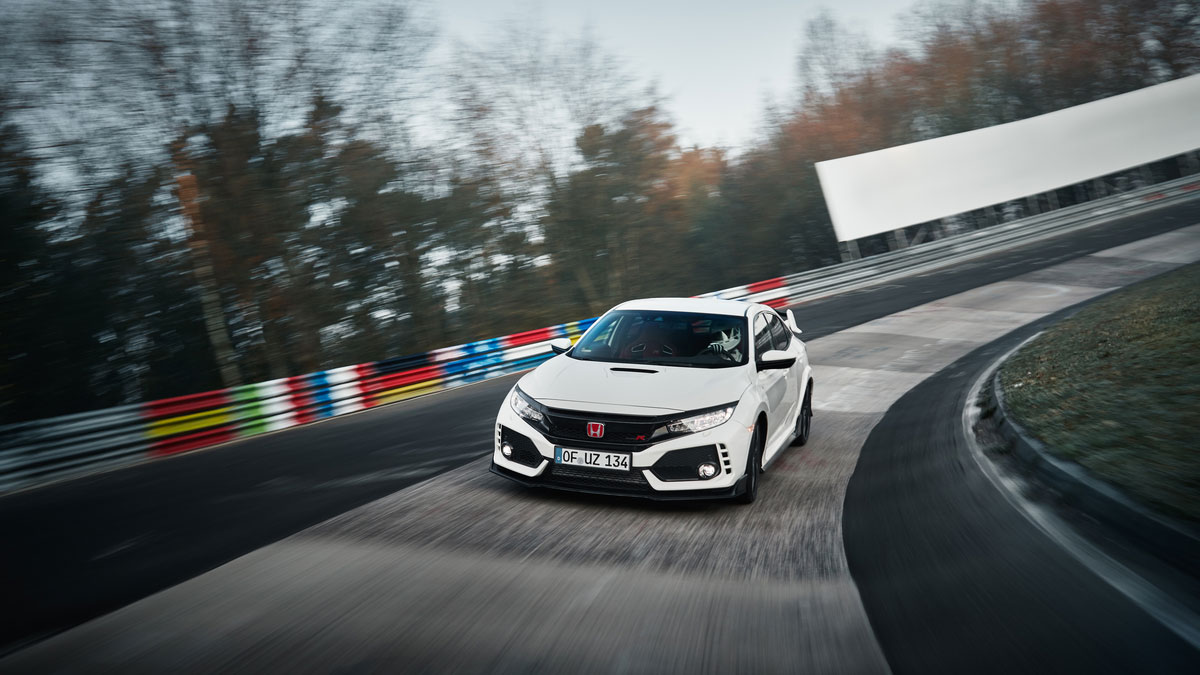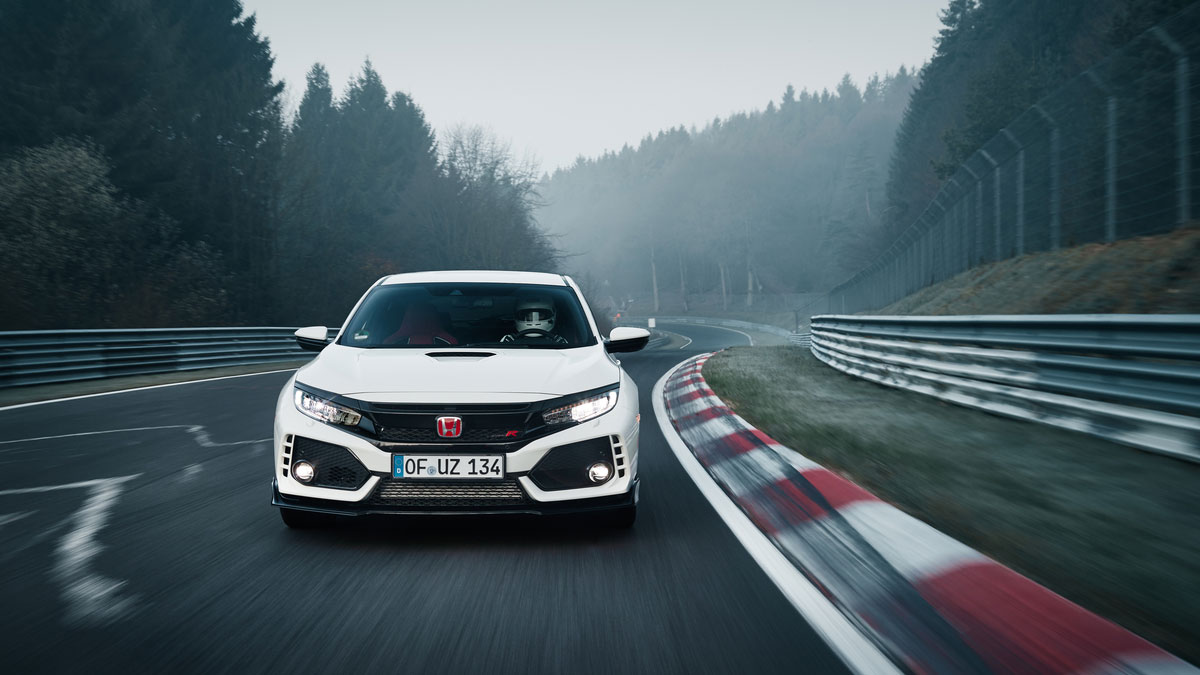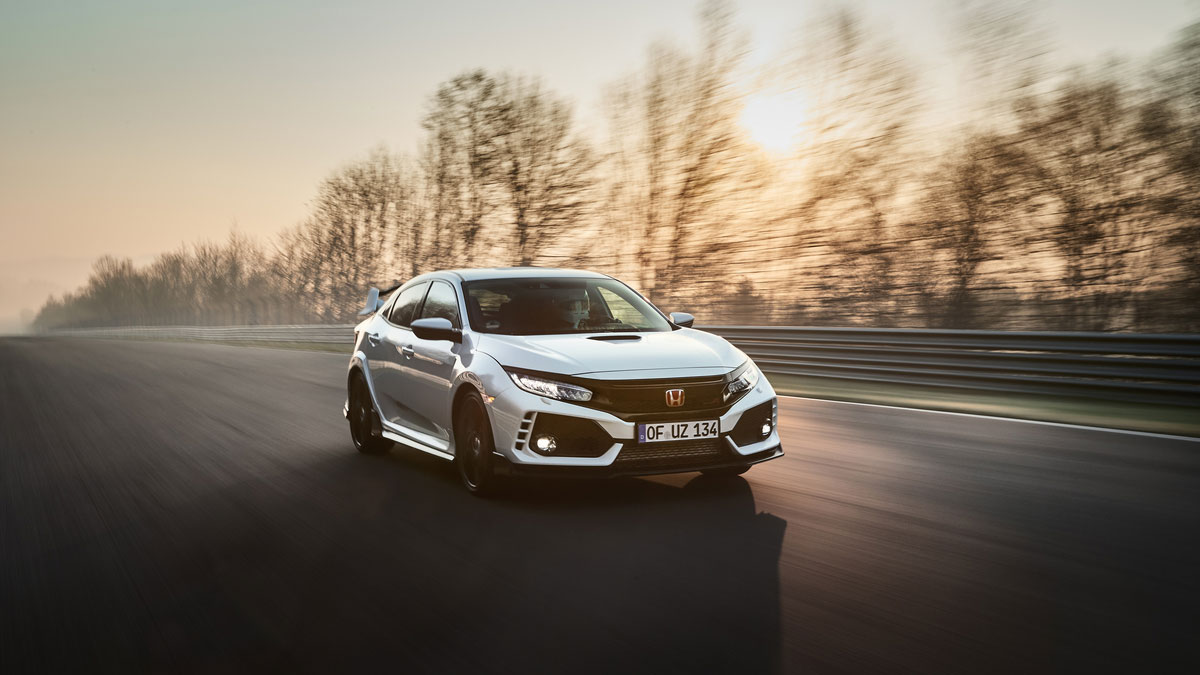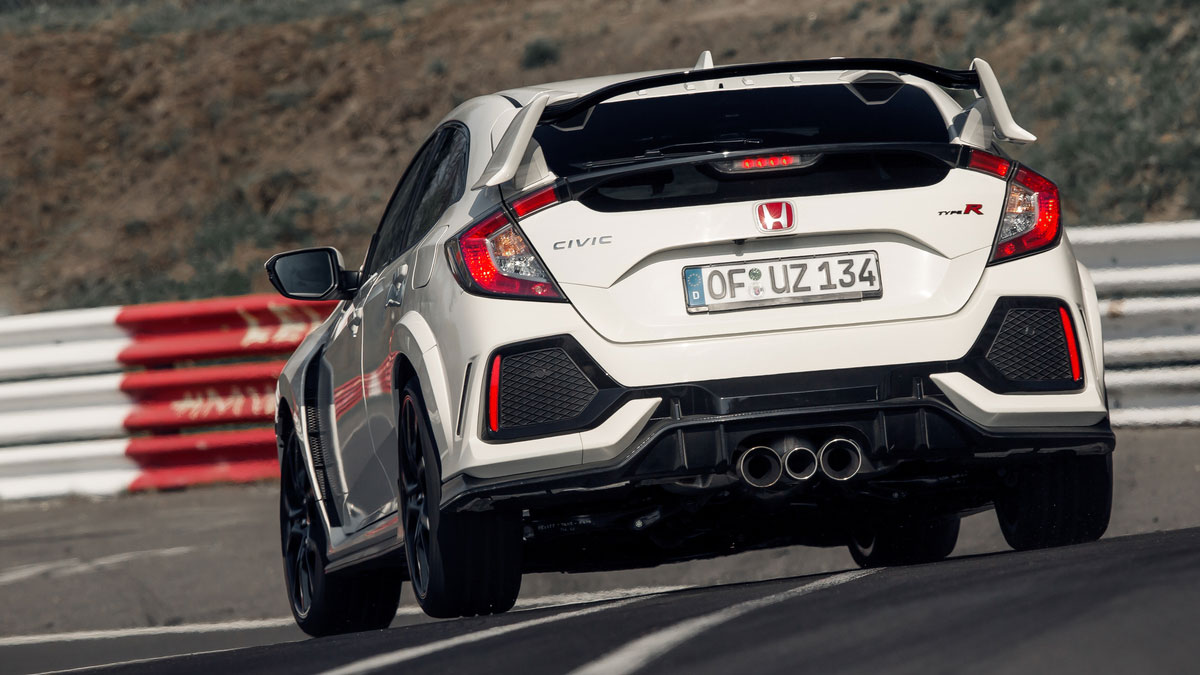Ever heard the phrase, “pictures or it didn’t happen?” In general, skeptics only seem satisfied by photographic evidence. However, in the automotive world, critics will only be silenced by a Nurburgring lap time.
Automakers can flap their jaws all day about a car’s performance, but enthusiasts want to see a lap around the famed German racetrack before believing the hype.
Honda is pretty excited about its all-new Civic Type R – and for good reason. The range-topping Civic is based on the hatchback body style, and uses a 2.0-liter turbocharged four-cylinder to make 306 horsepower and 295 pound-feet of torque. This is funneled through a six-speed manual transmission to the front wheels. It’s a spicy recipe, but enthusiasts want a taste of that performance. Honda has just given it to them.
A prototype of the 2017 Civic Type R that is “technically representative of the production specification” took to the Nurburgring for a timed lap and came out the other end with a record. The Type R blasted around the 12.9-mile circuit in just 7 minutes and 43 seconds, almost 7 seconds faster than the last generation Type R and 3.39 seconds quicker than the current front-wheel drive lap record holder, the VW Golf GTI Clubsport. Just over three seconds may not sound like much, but in the world of lap times, that’s an eternity.
Honda is ready to celebrate its achievement, but some have taken issue with the lap. As we mentioned, the vehicle is a prototype, which is a gray area. Though Honda says it closely matches the production car, the Japanese automaker doesn’t say specifically what’s different. What we do know is that the lap record attempt was made on Michelin Pilot Sport Cup 2 tires, but the production car will get less aggressive Continental tires as standard (Sport Cup 2’s may be optional equipment, like the Ford Focus RS). The lapping car also used a roll cage, but Honda claims it didn’t add rigidity.
Whether you feel these changes make enough of a difference in performance is entirely up to you. By our estimation, the 2017 Civic Type R is worthy of its crown – and we can’t wait to make some first-hand impressions.
